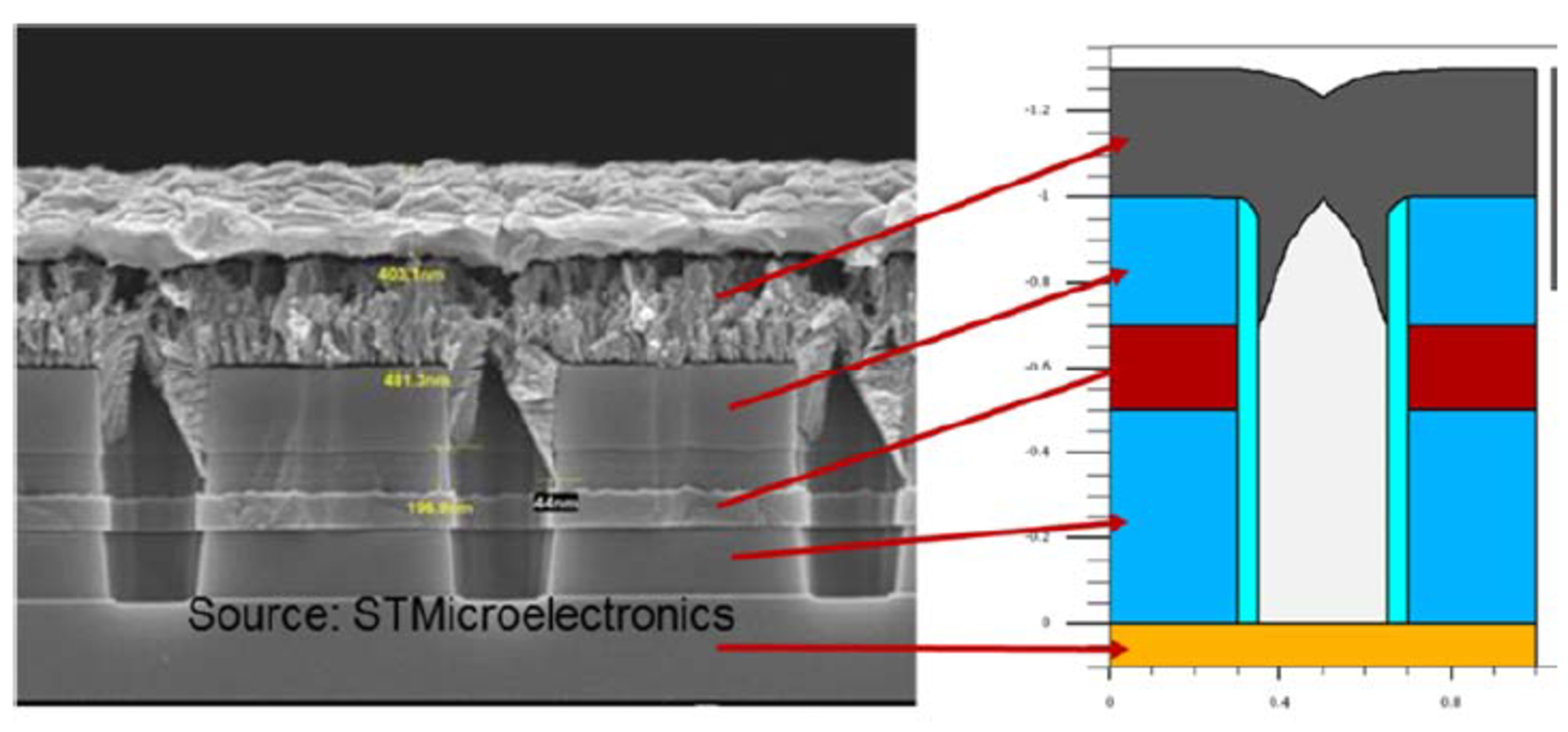A new type of power cell for space
A TDE activity with STMicrolelectronics in Italy has investigated, characterised and verified a new type of power cell for space applications.
The new type of cell, based on junction-less transistors, could be a possible competitor for Gallium nitride (GaN), Silicon Carbide (SiC) and other semiconductors for both radiofrequency and power applications in space.
In recent years the increasing demand for high-speed, high-power telecommunication systems up to the terahertz range and the achievements of nanotechnologies and microelectro-mechanical systems has given a new impulse to research in the field of vacuum micro-electronics and nano-electronics. It is known that the frequency behavior of solid-state devices (even adopting high performance yet expensive materials, such as gallium arsenide, gallium nitride, and silicon carbide) is fundamentally limited by the charge carrier velocity through the semiconductor material. Electrons in vacuum, on the contrary, travel without collisions, and their speed is theoretically three orders of magnitude greater. As p-n junctions are not normally present and reverse bias breakdown does not occur, vacuum tubes are best suited for handling high voltages and high powers. Electron emission in cold cathode tubes is due to the quantum tunneling effect, which is quite insensitive to radiation, high-temperature variations, and high electromagnetic fields. This means a device capable of merging the aforementioned advantages with those of solid-state technology (batch processing, miniaturisation, integration, reliability, long life and last but not least, and low cost) would open new potential scenarios for future products useable in long-range telecommunication and aerospace applications.
The new type of power cell, called iTriode, operates on the triode principle, but using a tunnel effect instead of thermionic electron emission.
Such technology seems suitable to space applications as it is immune to radiation, allowing high power-density, high switching frequency (10-100GHz TBC), and high voltage applications (600V TBC).
The activity began by engineering the basic iTriode chip structure, before developing and manufacturing prototypes for characterization.
These fifteen prototypes were put through functional tests and their output was measured and evaluated. Radiation tests (limited to total dose) were also performed in the TEC-QEC labs.
The next steps are to
Conduct further dynamic electrical characterisations (using AC at a high frequency) at the end of 2020. The activity would also benefit from assessing how an increase in the trans-conductance parameters would allow the cell to compete with other devices.
TDE 400115270 closed in 2020















 Germany
Germany
 Austria
Austria
 Belgium
Belgium
 Denmark
Denmark
 Spain
Spain
 Estonia
Estonia
 Finland
Finland
 France
France
 Greece
Greece
 Hungary
Hungary
 Ireland
Ireland
 Italy
Italy
 Luxembourg
Luxembourg
 Norway
Norway
 The Netherlands
The Netherlands
 Poland
Poland
 Portugal
Portugal
 Czechia
Czechia
 Romania
Romania
 United Kingdom
United Kingdom
 Slovenia
Slovenia
 Sweden
Sweden
 Switzerland
Switzerland


























